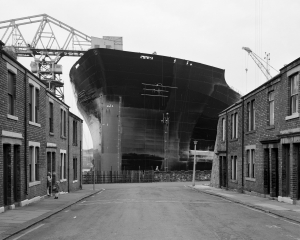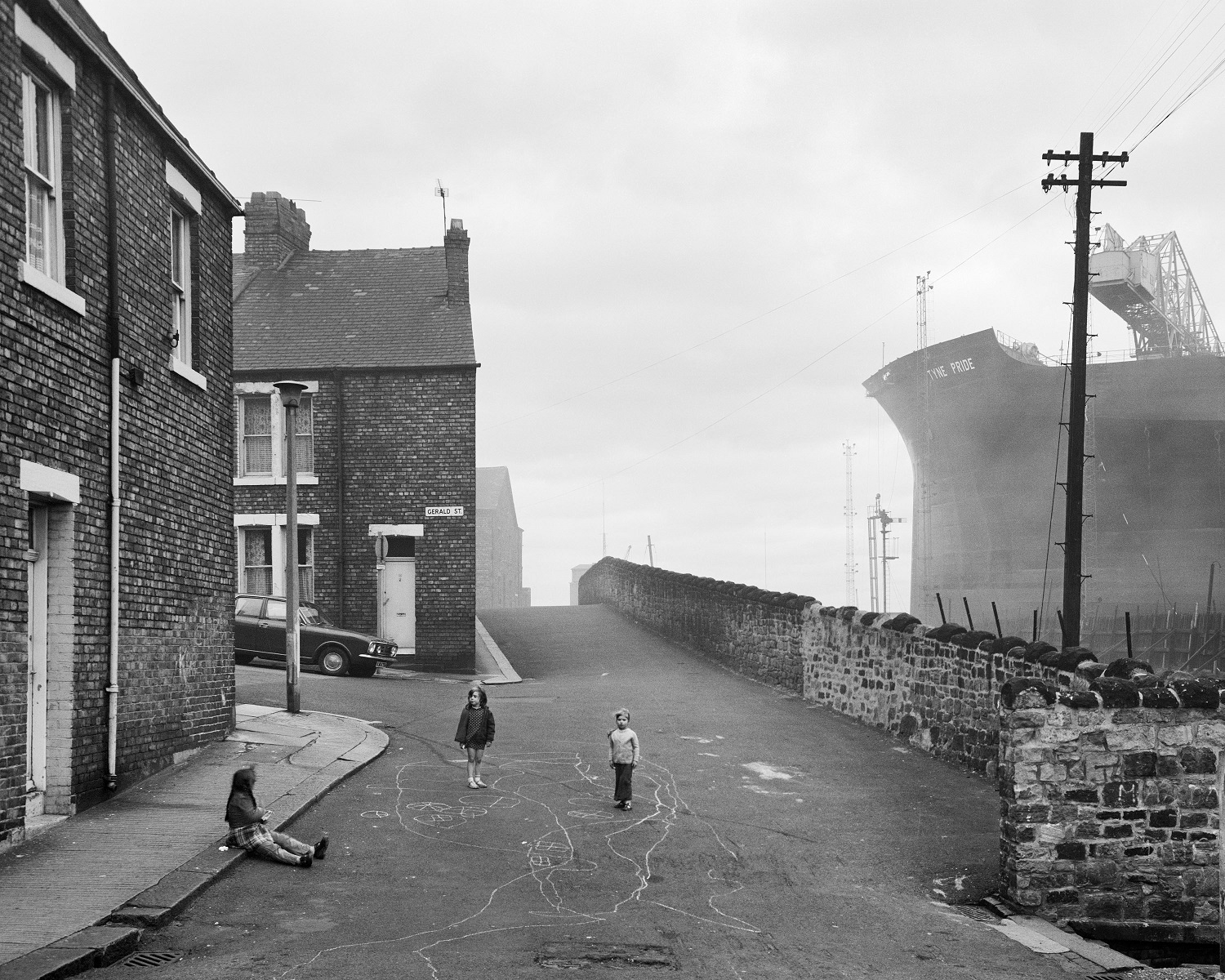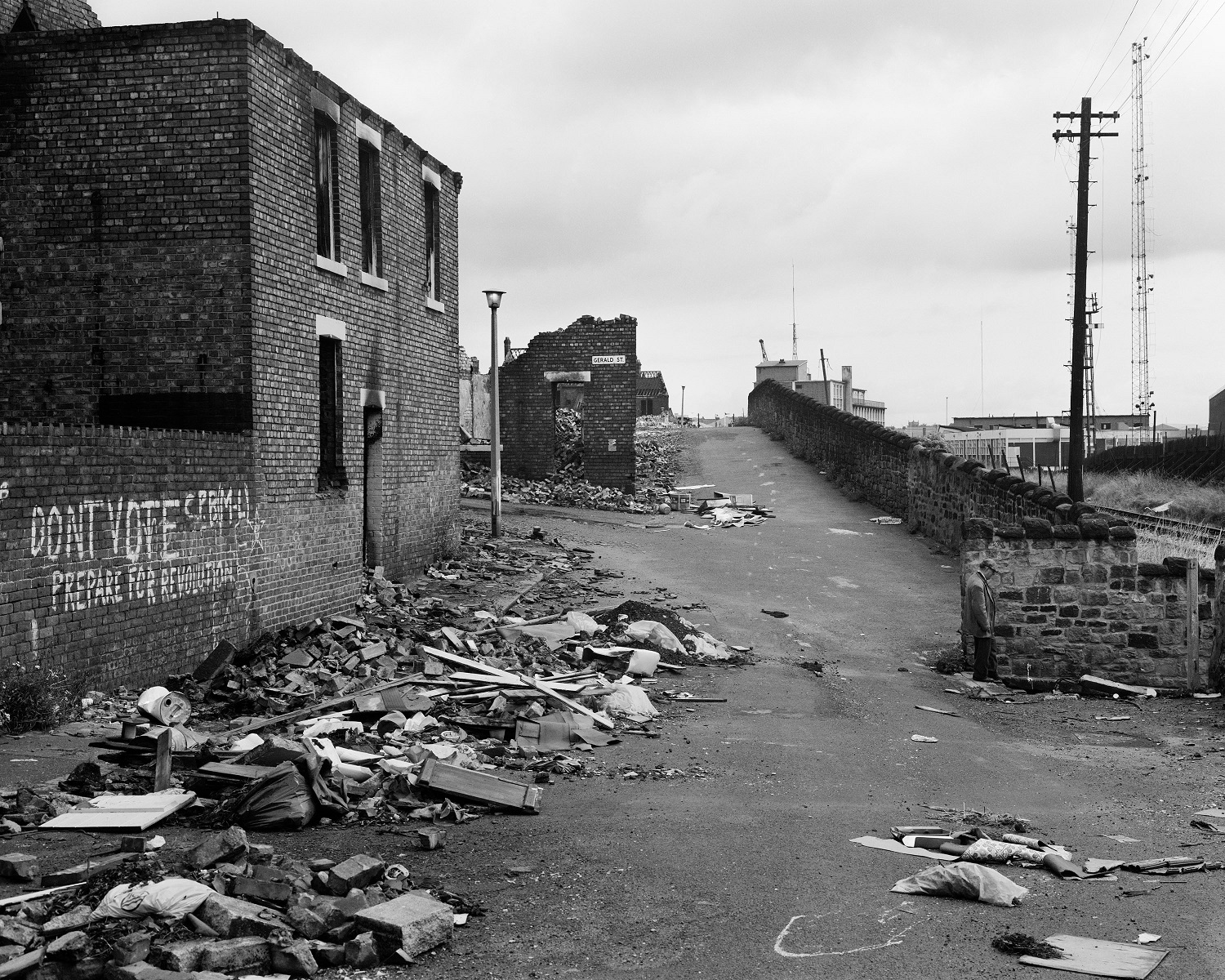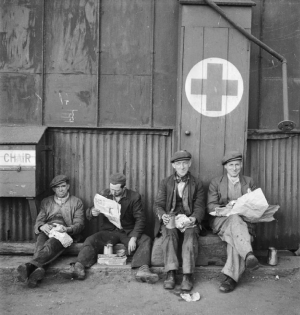What’s Left? A Century in Revolution
By Andy Byford, Anoush Ehteshami, Abir Hamdar, Francisco-J. Hernández Adrián & Dušan Radunović
Between 29 September and 8 October 2017, Tyneside Cinema in Newcastle and Durham University staged a special programme of screenings and talks to mark the centenary of the 1917 October Revolution. The programme explored major revolutionary events of the 20th and 21st centuries to tease out some of the meanings of revolution today. By examining cinematic engagements with, and reflections on, revolutions across the former Soviet space, Latin America, China, the Middle East, North Africa and, finally, Europe, the ambition was to highlight both the global interconnectedness and the local specificity of the revolution as a phenomenon.

Tyneside Cinema, where the events took place, is one of the UK’s leading independent film and media venues. This year it celebrates its 80th anniversary, having started its life in 1937 as Newcastle’s News Theatre. Housed in a spectacular Grade II listed building in the heart of the city, the cinema is famous as a screen heritage attraction and represents the main regional venue for screening special programmes of world cinema and media arts, both classic and avant-garde.

The What’s Left? programme was co-curated in partnership with Tyneside Cinema by a team of scholars based at Durham University’s Schools of Modern Languages and Cultures (MLAC) and Government and International Affairs (SGIA). From left to right: Dušan Radunović, Abir Hamdar, Francisco-J. Hernández Adrián, Anoush Ehteshami and Andy Byford.
The team are part of an interdisciplinary programme of research that explores the dynamics of political, social and cultural interaction across communities which share a single language, but are dispersed across multiple states and cultures. They have particular interest in Russian-, Arabic-, Spanish- and Chinese-speaking transnational communities. Their project is funded by the UK’s Arts and Humanities Research Council (AHRC) as part of its Open World Research Initiative (OWRI). The main goal of this initiative is to demonstrate the strategic need that the UK has for the systematic study and knowledge of languages and language-based cultures in global perspective.
October: A World Shaken

Oktiabr’. Desiat’ dnei kotorye potriasli mir. Dir. Sergei Eisenstein & Grigori Aleksandrov. USSR, 1928.
The programme opened with a special 35mm screening of Sergei Eisenstein and Grigori Aleksandrov’s silent classic October (1928). The film was shot and edited during 1927-28 for the celebration of the tenth anniversary of the October Revolution. Its premiere coincided with major political changes in the Soviet Union – the beginning of Stalinisation, including the revision of the legacies of 1917. In that context, the auteurism of Eisenstein’s masterpiece and its exalted vision of revolutionary revolt resulted in a mixed reception and led to the film being discreetly shelved in 1933.

The musical accompaniment for the screening was created specially for this event and performed by John Snijders of Durham University’s Music Department. The score was made up of early 20th-century Russian avant-garde pieces for the piano by well-known as well as now largely forgotten composers, including: Samuil Feinberg (1890-1962), Alexander Mossolov (1900-1973), Nikolai Miaskovsky (1881-1950), Nikolai Obukhov (1892-1954), Sergei Prokofiev (1891-1953), Sergei Protopopov (1893-1954), Nikolai Roslavets (1881-1944), Dmitri Shostakovich (1906-1975) and Igor Stravinsky (1882-1971).
Memories of Underdevelopment: Beyond Remembering
While the occasion for producing the programme was the anniversary of the Russian Revolution, the curators’ goal was to go beyond commemoration and to pursue a non-nostalgic, critically reflective approach to the contemporary significance of revolution. This entailed, crucially, an interrogation of the relationship between the revolutionary past, present and future – a question that the programme began to explore first in the case of Cuba. The programme featured the UK premiere of the recently remastered version of the classic of Latin American and Caribbean cinema, Tomás Gutiérrez Alea’s Memories of Underdevelopment (1968). Through its exploration, at the height of the Cold War, of the contradictions and aspirations of the Cuban Revolution, the film challenges us to consider how in revolutions tensions between perceived underdevelopment, colonial interdependence, individual freedoms and political compromise continue to shape the uncertainties of our contemporary world.

Memorias del subdesarrollo. Dir. Tomás Gutiérrez Alea. Cuba, 1968. The screening of the film was followed by a lively discussion with the audience, chaired by Durham University’s Francisco-J. Hernández Adrián. The guest speakers were Michael Chanan, documentary filmmaker and influential historian of Cuban cinema, and two leading Caribbeanists from Newcastle University, Dunja Fehimović and Jorge Catalá Carrasco.
Esto es lo que hay: Take It or Leave It!
To address the critical question ‘How are Cubans today living and leaving the historical project of the Cuban Revolution?’ the curators invited the French documentary filmmaker Léa Rinaldi to showcase her 2015 documentary Esto es le que hay, which focuses on the censorship of and political controversy surrounding Los Aldeanos – one of the most prominent Cuban rap bands, famous for their active engagement with sensitive issues affecting contemporary Cuban society.

Esto es lo que hay, chronique d’une poésie cubaine. Dir. Léa Rinaldi. France, 2015. After the screening, the film’s director, Léa Rinaldi, was interviewed via Skype by Francisco-J. Hernández Adrián and the Cuban culture critic and activist Parvathi Kumaraswami (University of Reading). Rinaldi discussed with the audience her interest in the new generation of Cuban cultural and social actors who are today consciously reshaping the present-future dimensions of the Cuban revolution. The discussion brought to the fore the intensity, uncertainty, and pain of political participation and censorship, masculinity and exile, not only in the Cuban or Caribbean contexts, but also globally.
Once Upon a Time Proletarian: In History’s Limbo
Revolutions change the course of history, but they ultimately acquire meaning in and through the lives of ordinary people caught up in them. By looking at the legacies of the Chinese communist revolution, the programme examined the intimate interlocking of personal and historical time in the documentary Once Upon a Time Proletarian (2009) by UK-based Chinese filmmaker and novelist Xiaolu Guo. The film is composed of ad hoc interviews with representatives of China’s contemporary ‘proletariat’ as they try to make sense of their place in a rapidly changing social, political and economic landscape. Guo subtly interweaves fragments of her protagonists’ reflections on the meaning of their lives with poetic – roughly shot, but carefully edited – visual sequences, to produce an understated but powerful image of a ‘prison house’. ‘The prison’ serves here as a metaphor not for China itself, but for the limbo of historical time in which present-day Chinese ‘proletarians’ seem to be caught up – an uncertain place between a past figured by narrations of revolution and an undefined future that has no shape other than the immensely attractive, but still largely symbolic, image of the child.

Women ceng jing de wuchanzhe. Dir. Xiaolu Guo. China & UK, 2009. The film was followed by a discussion with the audience, chaired by Andy Byford (Durham University), in which sociologist Sophia Woodman (Edinburgh University) placed the subject in the framework of social change in contemporary China, while film studies scholar Sabrina Yu (Newcastle University) situated the film in the context of Chinese independent documentary filmmaking.
Videograms of a Revolution: The TV Is with Us!
In contrast to both Cuba and China, whose socialist regimes, forged in revolution, persist to this day (albeit in significantly reshaped forms), Eastern Europe experienced, between 1989 and 1991, a revolutionary overturn of socialism itself. The What’s Left? programme featured Harun Farocki and Andrei Ujică’s Videograms of a Revolution (1992) – a documentary that focuses on the five days in December 1989 which brought down the Romanian dictator Nicolae Ceaușescu. As demonstrators occupied the state television station in Bucharest and broadcast continuously for 120 hours, television became an instrument of revolution, while the television studio was turned into a site in which history was made.

Videogramme einer Revolution. Dir. Harun Farocki & Andrei Ujică. Germany & Romania, 1992.
The Event: Do Not Let Them Deceive You!
The immediacy and visual potency of television does not mean, however, that the revolutionary downfall of communist rule in the countries of the Eastern bloc, including the USSR itself, was necessarily rooted in transparency. A quarter of a century on, documentary filmmaker Sergei Loznitsa is still trying to piece together what lay behind the supposed ‘birth of democracy’ in Russia in 1991. In August of that year, a failed coup d’état was staged in Moscow by a group of Communist Party hardliners who sought to thwart the political and economic reforms of the Soviet Union instigated by Mikhail Gorbachev. What became known as The Putsch was overturned in part thanks to thousands of liberal-minded citizens of Moscow and Leningrad who came out onto the streets in protest. In his documentary The Event (2015), Loznitsa revisits extant documentary footage of the 1991 public demonstrations kept in the Leningrad archives and casts his own interpretation of these world-changing political events.

Sobytie. Dir. Sergei Loznitsa. Netherlands & Belgium, 2015. The screening was followed by a Skype interview with the director and discussion with the audience, chaired by Dušan Radunović. Loznitsa spoke about the background to the making of this film (which he dubbed a ‘found-footage’ documentary) and about his interest in Russia’s short-lived experience of political liberalism. He placed the events of 1991 in the wider context of Russian history, which, in his view, is shaped by cyclical returns of totalitarian models. One of these models, he argued, is ‘revolution’ itself.
Krisis: The Return of the Repressed
Krisis (2016), by artist Dmitry Venkov, is a theatrical re-enactment of a Facebook discussion between Russian and Ukrainian artists after the toppling of Lenin’s statue in Kiev during the Euromaidan protests of 2013-14. It shows that the revolutionary symbols of the Soviet era are still alive in post-Soviet societies – societies that are still, over a quarter of a century since the dissolution of the USSR, as deeply connected as they are divided by history, politics, and aesthetics.

Krisis. Dir. Dmitri Venkov. Russia, 2016. After the screening, Dušan Radunović chaired live Q&As with the author. Venkov discussed both some of the formal aspects of his filmmaking (such as what happens when one turns a Facebook exchange into a scenario) and the major ideological issues that his film raises. The discussion revolved especially around the symbolic meanings of monuments and how political ideas morph over time and start to mean something else – key questions that the What’s Left? programme sought to bring to the fore around the topic of ‘revolution’. Members of the audience drew important parallels with related issues in very different cultural and political settings, including, for instance, contemporary Italy.
Pussy vs Putin: Weaponising Gender
As should be clear in the example of Pussy vs. Putin (2013) – an eyewitness chronicle of Russia’s anarchic feminist rock performance group, Pussy Riot, before and after the 2013 arrest and imprisonment of three of their members – Russia remains fertile ground for revolutionary, anti-authoritarian activism. It is a place, moreover, where a new aesthetic of political radicalism is being developed – one in which gender is, it would seem, deployed as a particularly powerful weapon.

Pussy protiv Putina. Dir. Gogol’s Wives. Russia, 2013.
What Is to Be Done? The Summer School
A related form of cultural-political activism in Russia was showcased through the brand-new art film of the Russian avant-garde collective Chto Delat? (What Is to Be Done?). Titled New Dead End #17: Summer School of Orientation in Zapatism, the film was co-commissioned by Tyneside Cinema and premiered in Newcastle as part of the What’s Left? programme. Inspired by the Zapatista Army of National Liberation (EZLN), a leftist political and militant group based in southern Mexico, the film explores the idea of the so-called ‘Zapatista Embassy’ – ‘horizontal meetings’ designed to encourage others to walk with the Zapatista and deliver their message. The film documents the goings on at a ‘summer school’ in a village outside St Petersburg, where participants engage in self-reflection and improvised experimental performances as part of a tongue-in-cheek ‘Zapatista Embassy’ transposed to Putin’s Russia one hundred years after the October Revolution.

New Dead End #17: Summer School of Orientation in Zapatism. Dir. Chto Delat? Russia, 2017. Chto Delat? is an art collective, founded in St Petersburg in 2003, whose work merges experimental and performative art with political activism. The group’s name derives from the 1860s’ novel by Nikolai Chernyshevsky and brings to mind some of Russia’s earliest revolutionaries. The same title was borrowed by Lenin for his 1902 pamphlet in which he argued for the formation of a revolutionary vanguard, which not long after materialised as the Bolshevik Party.
The Uprising: Narrating Pan-Arab Mobilisation
The most visible and prolifically documented revolutions of the present moment are, no-doubt, the uprisings that spread across the Arab world in 2011 and whose aftermaths still haunt the region in the shape of a succession of ferocious civil wars, with Syria at the forefront. The What’s Left? programme’s look at the 21st-century Arab revolutions provided an opportunity to reflect on how mobilisation for change has been framed around the idea of the ‘Arab Spring’. In the 20th century, notions of pan-Arabism, Arabness as a singular form of identity, and a struggle for Arab unity under the banner of such pan-Arabist leaders as Egypt’s Gamal Abdel Nasser, provided the context for the emergence of the Arab state. In his docufilm The Uprising, Peter Snowdon imagines a new – 21st-century, ‘post-modern’, bottom up, technologically mediated – form of pan-Arabism in action. He forges a narrative in which ‘the Arab people’, from the rural corners of Tunisia to cosmopolitan Cairo, rise up and set off on the march for justice, freedom and dignity.

The Uprising. Dir. Peter Snowdon. UK, Belgium, Yemen, Tunisia, Syria, Libya, Egypt & Bahrain, 2013. The lively panel discussion that followed the screening (chaired by Anoush Ehteshami and featuring the film’s director Peter Snowdon and Durham University’s Middle East expert Emma Murphy) focused on the role of technology, or rather ‘digital action’, in mass mobilisations in the region, on the importance of youth as a social category in political mobilisation, and, finally, on what the consequences are of viewing distinct uprisings through the lens of a single ‘camera’ – that is to say, a single narrative.
Silvered Water, Syria Self-Portrait: What Does It Mean?

Ma'a al-Fidda. Dir. Wiam Bedirxan & Ossama Mohammed. France, Syria, USA & Lebanon, 2014. A collaboration between exiled Syrian filmmaker and young Syrian-Kurdish schoolteacher, the film is composed of footage from thousands of authentic videos sent through directly to the authors by those caught up in the war. The result is a harrowing on-the-ground documentary chronicle of the ordeal undergone by Syrians today. The screening of the film was a charged event on all levels – both cinematically and emotionally – as the audience included a group of around thirty Syrian refugees resettled in Durham County, who shared their experiences of the war and the impact of the film on them.
What does it mean to screen a film on the horrors of the Syrian revolution and the ensuing civil war while having the very people who took part in it there, watching their homes and their streets destroyed on screen, and their family, friends and compatriots undergo suffering and death? What meanings did these people assign to the struggle and pain that was shown, and how did they relate it to their own narratives of their own hardship and loss? As everyone present mediated between languages, cultures and contexts, the panel chair, Abir Hamdar, and invited panellists – Syrian writer Robin-Yassin Kassab, activist Leila al-Shami, journalist and novelist Malu Halasa, and Head of the Middle East section at Chatham House Lina Khatib – addressed the multiple issues at stake, both in the film and in Syria itself. Malu Halasa spoke for all those present when he later wrote in an email: ‘I'll always remember last night. The refugee women were so special and amazing. I've not met a group like that before. I woke up this morning thinking I don't know if I can watch Silvered Water again, but then I thought it is my duty to watch it.’
The Trials of Spring: Revolution is a Woman
Revolution – al-Thawra – has feminine connotations in Arabic and Arab women have always been at the forefront of revolutions in the region. Egypt’s Arab Spring was no exception. Women were in the heart of Tahrir Square during the protests; but they also became a prominent subject of terror and attacks for their involvement.

The Trials of Spring. Dir. Gini Reticker. USA & Egypt, 2015. When a young Egyptian woman travels from her village to Cairo to add her voice to the tens of thousands of Egyptians demanding an end to sixty years of military rule, she is arrested, beaten, and tortured by security forces, and later punished and imprisoned by her family for daring to speak out. Unbreakable, she sets out in search of freedom and social justice in a country in the grips of a power struggle, where there is little tolerance for the likes of her.
The screening of The Trials of Spring by Gini Reticker addressed the question of women in Egypt’s revolution of 2011, while the panellists – Abir Hamdar (Durham University), Zahia Salhi (University of Manchester) and Maria Holt (University of Westminster) – provided powerful interventions on the significance of women’s participation in political activism in the region. Al-Thawra mustamirra – ‘The Revolution Continues’ – is a slogan that was chanted again and again by Egypt’s revolutionaries. Reticker’s film and the ensuing discussion underscored another layer and meaning to this slogan: can women continue to participate in revolutions in the region; how, at what cost, and with what consequences?
A Grin Without a Cat: As One Event Sweeps Another

Le fond de l'air est rouge. Dir. Chris Marker. France, 1977.
The What’s Left? programme ended with the screening of Chris Marker’s remarkable two-part documentary A Grin Without a Cat (1977). The film weaves an array of archival historical footage, ingeniously edited to retrace the issues, events and debates that had provoked the upsurge of worldwide political activity in the late 1960s and early 1970s following the rise of right-wing oppression and the crisis of the traditional left. In Marker’s own words, the film was pitched against what he saw as the historical amnesia caused by the television treatment of global events, where ‘one event is swept away by another […] and it all finally descends into collective oblivion’ – something still acute today, forty years on.
What’s Left? Rethinking Revolution through Visual Art and Cinema

The programme closed with a discussion titled What’s Left? Rethinking Revolution through Visual Art and Cinema, led by the Durham curatorial team (from left to right): Anoush Ehteshami, Abir Hamdar, Dušan Radunović, Francisco-J. Hernández Adrián, and Andy Byford. The panellists engaged the audience on the question of what makes the visual media and the cinematic form so relevant a lens through which to reflect on the phenomenon of revolution. From their different perspectives, the team discussed in what ways cinema and visual culture have been such an important part of revolutionary processes, and how, thanks to distinctive forms of communication, modes of narration and aesthetic devices, they perform a major role in endowing ‘revolution’ with an existence that cuts across historical time and geopolitical space, across the personal, the culturally specific, and the universal.























